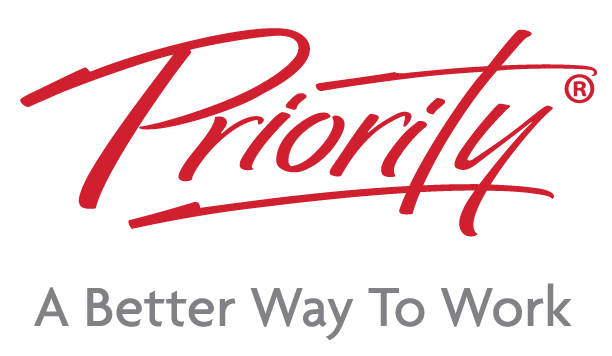Most performance issues don’t stem from a lack of effort, but from a lack of clarity. It comes down to communication when expectations are vague or assumed rather than clearly stated. Even your most capable team members can feel lost or head in the wrong direction entirely. As a result, you have underperformance.
Clear expectation setting is one of the most undervalued yet powerful tools in a leader’s kit. It’s a cornerstone of trust. We’ve created this guide to provide you with practical tools to reset and realign expectations with your team, no matter what your leadership style or industry. Here’s what to expect (we’re setting clear expectations, you could say):
- Why expectation-setting is essential for high-performing teams
- Common mistakes leaders make and how to avoid them
- A simple framework to set, communicate, and reinforce expectations
- Real-world examples to help you apply the ideas
- Quick tips to revisit expectations when things change
Why Leaders Must Set Clear Expectations
 When expectations are ambiguous, so is your team. They waste time heading in different directions, which can result in blurred responsibilities, underperformance and missed deadlines. This is not necessarily from lack of effort, but from misunderstanding. And if it occurs time and time again, trust erodes. While it’s easy to blame your team for underperforming, it’s important to own your misjudgment in good leadership.
When expectations are ambiguous, so is your team. They waste time heading in different directions, which can result in blurred responsibilities, underperformance and missed deadlines. This is not necessarily from lack of effort, but from misunderstanding. And if it occurs time and time again, trust erodes. While it’s easy to blame your team for underperforming, it’s important to own your misjudgment in good leadership.
On the flip side, when you, as a leader, set clear, consistent expectations, everything changes. Your team is on the same page and understands what’s expected.
They know how success will be measured and how their work contributes to bigger goals. That clarity not only builds trust and fuels accountability but also improves employee engagement and motivates them to deliver. Team members take more ownership. Communication and employee expectations improve. And the results follow.
The Psychology Behind Clear Expectations
At a psychological level, humans crave clarity and structure. When we know exactly what’s expected of us, we feel more confident and better equipped to do our best work. Uncertainty, on the other hand, leaves us feeling confused, which makes it harder to plan, focus and prioritise.
Furthermore, by giving team members a framework to operate within, you are freeing up cognitive energy for creative thinking, problem-solving, and performance. This is not about micromanaging; it’s about providing the clarity people need to engage and thrive in their personal and professional growth.
5 Steps to Setting Expectations That Stick
Here are five actionable steps you can take to create a culture of clear expectations.
1. Define What Success Looks Like
Before you can expect your team to meet your standards, you need to clearly articulate what “good” looks like. Be specific and outcome focused. This includes outlining deliverables, deadlines, quality benchmarks, and behaviours that align with your team or company values. Consider creating a document—such as a company handbook—that clearly outlines your expectations and share it during onboarding so new employees understand what’s expected from the start.
2. Communicate Early and Often
Expectation-setting isn’t just about company-wide standards; it also applies at the project, role, and task levels. Setting them early is also crucial, before continuing with regular check-ins to help reinforce those expectations, track progress and adjust them if needed.
3. Invite Two-Way Dialogue
Effective expectation-setting is not a one-way street. Encourage your team to ask questions, clarify priorities, and raise any concerns. Because this is how you will make your expectations as clear as possible. If people feel they don’t have a voice, then how can they clarify uncertainties?
Conversely, when people feel heard, they’re more confident to clear up any areas they’re unsure of and take total control. This collaborative approach also builds trust and psychological safety.
4. Document Agreements and Revisit Them
Once you’ve defined what success looks like, take the extra step to formalise it. This could be a company bible, team charter, shared document, or simply a clear follow-up email. Putting expectations in writing helps cement them and gives your team a reference point. You’ll find such documentation becoming especially valuable during onboarding, performance reviews, and key project milestones.
5. Link Expectations to Outcomes and Accountability
Make the connection between expectations and their real-world impact. How does this task contribute to the bigger picture? Or what are the consequences of meeting (or not meeting) these standards? You’ll find this incredibly motivating for your team members by helping them understand the role they play in team success.
Common Mistakes Leaders Make
Here are some of the biggest mistakes we see leaders make when it comes to setting expectations, and how to avoid them:
Vague language
Avoid using language like “do your best” or “handle it quickly.” It leaves too much open to interpretation. Be specific about what outcomes you expect and by when.
Assuming alignment without feedback
Just because you’ve said something doesn’t mean it’s been understood. Failing to check for understanding or not inviting feedback often leads to confusion. Always ask if your team has questions or ideas.
Setting unrealistic or shifting goals
Nothing erodes trust faster than moving the goalposts. While agility is important, constantly changing expectations without a clear rationale or support can frustrate your team.
Examples of Effective Expectation-Setting
 Let’s look at some examples of setting expectations in action.
Let’s look at some examples of setting expectations in action.
Scenario 1: Project Deadlines
A team leader sets a clear deadline for a report: “Please submit the draft by 3 PM Friday so we can review it together Monday morning.” They also explain why the timing matters—for example, finishing by Friday allows the team to relax over the weekend and start fresh on Monday. Also, align on responsibilities, and confirm understanding to avoid last-minute surprises.
Scenario 2: Behavioural Expectations
A manager tells their team, “In meetings, I expect everyone to contribute respectfully, ask questions and come prepared with updates.” This sets a standard for participation and tone, reinforcing accountability while fostering a collaborative environment.
Scenario 3: Performance Metrics
An executive outlines KPIs with a direct report: “Your target is a 10% increase in client retention this quarter. Let’s check progress weekly and adjust strategy if needed. Hitting the target will position you well for a performance bonus, and if the whole team hits the target, we are going on a team bonding trip to Bali.
Additionally, it will open the door to larger accounts and commissions next quarter.”
Tools and Frameworks to Help
Leadership Courses
Never stop learning! The best thing you can do is educate yourself by investing in leadership development, such as Priority Management’s leadership training. We help managers build the skills needed to lead effectively.
SMART Goals
Adopt the SMART framework (Specific, Measurable, Achievable, Relevant, Time-bound). It gives structure to expectations, helping teams understand exactly what success looks like and how to measure it.
OKRs (Objectives and Key Results)
OKRs align team efforts with broader business goals. They clarify not only what needs to be achieved but also how progress will be tracked. Again, this helps your team know how they are contributing to the bigger picture.
Communication Cadences
Regular check-ins, team-building exercises, or team huddles help reinforce expectations, track progress, and improve engagement.
1-on-1 Meeting Templates
Using structured templates for one-on-one meetings ensures consistency and provides a space to review expectations, give feedback, and course-correct (if needed).
Clear Expectations, Better Results
 Setting expectations isn’t just leadership best practice; it’s the unsung performance driver. When teams know exactly what’s expected, they’re more engaged, more accountable, and more likely to succeed.
Setting expectations isn’t just leadership best practice; it’s the unsung performance driver. When teams know exactly what’s expected, they’re more engaged, more accountable, and more likely to succeed.
Start small: choose one area, whether it’s project timelines, team behaviours, or KPIs, and clarify it this week. You’ll likely see an immediate boost in alignment, focus and, ultimately, results.
Ready to lead with clarity? Explore Priority Management’s leadership training or get in touch with us to start building a high-performing culture.
FAQs
How do you drive results as a leader?
By setting employee expectations, empowering your team, and holding people accountable to shared goals towards organisational success.
How does a leader set expectations?
Effective leaders set certain expectations by clearly defining success, consistent communication, and reinforcing agreements with consistent constructive feedback for sustained success.
What are the five key areas leaders need to focus on to drive growth?
Great leaders drive growth through 5 key elements of vision, strategy, execution, team development, and performance measurement for the entire team.
How do you set expectations for your team and ensure they hit the goals you set?
Set SMART measurable goals, align on responsibilities, check in regularly with progress tracking, and provide the support needed to stay on track with team expectations.
